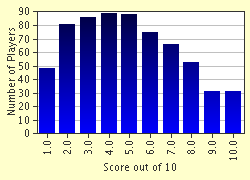Quiz Answer Key and Fun Facts
1. Assume a triangle ABC. Its legs are of lengths 2, 2, and 3. What type of triangle is it?
2. Find the area of a regular hexagon with a side length of 4.
3. In a transversal, you have 2 lines (AB and CD) whose slopes are 3/2 and 3/2 intersecting the transversal (EF), and the slope of the transversal is negative 2/3. Their points of intersection are G and H. What is the measure of angle AGE?
4. Find x and y. ABCDEF is a regular hexagon. The side lengths are as follows: x + y, 3x, 6 + x, y + 3, 17 - 8 + 24y - 3 + 3 - 24y, (2x + 2y)/2.
5. GHI is an equiangular triangle. GH = 30 + x - 3, GI = 12x - 6, HI = 10x. Solve for x.
6. You want to build a fort. It will have a square base and a pyramid-shaped top, which will be perpendicular to the base of the fort. One of the sides of the base will be 6 feet in length, the height of the fort will be 6 feet with the pyramid extending 3 feet beyond this. How much material will you need to cover the entire fort, including the floor? Please measure in square feet and round up to the nearest square foot.
7. Find the lateral area of this ice cream cone: An ice cream cone with a circular top which is perpendicular to the vertex, with a slant length of 5 inches, and whose circular top has a diameter of 2 inches.
8. Find the volume of the following cube (in cubic inches): The diagonal of the base is 30 times the square root of 2 feet.
9. Find the area of a the following sector of a circle: The angle of the sector is 100, and the circumference of the circle is 87.9645... .
10. Find the 3 angles of a triangle with side lengths 40, 40 times the square root of 3, and 80.
Source: Author
KKid4
This quiz was reviewed by FunTrivia editor
CellarDoor before going online.
Any errors found in FunTrivia content are routinely corrected through our feedback system.
